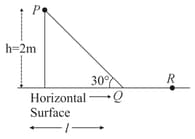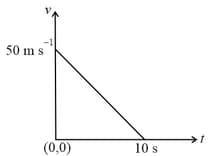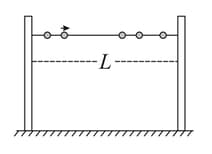A point particle of mass m, moves along the uniformly rough track PQR as shown in the figure. The coefficient of friction, between the particle and the rough track equals . The particle is released, from rest, from the point P and it comes to rest at a point R. The energies, lost by the ball, over the parts, PQ and QR, of the track, are equal to each other, and no energy is lost when particle changes direction from PQ to QR.
The values of the coefficient of friction and the distance , are respectively close to:


Important Questions on Work, Energy and Power
(Take the radius of the drum to be 1.25 m and its axle to be horizontal) :

A block of mass rests on a horizontal table. The coefficient of friction between the block and the table is . When hit by a bullet of mass moving with speed , that gets embedded in it, the block moves and comes to stop after moving a distance of on the table. If a freely falling object were to acquire speed after being dropped from height , then neglecting energy losses and taking , the value of is close to
A large number of identical beads, each of mass and radius are strung on a thin smooth rigid horizontal rod of length and are at rest at random positions. The rod is mounted between two rigid supports (see figure). If one of the beads is now given a speed , the average force experienced by each support after a long time is (assume all collisions are elastic):


A particle is released on a vertical smooth semicircular track from point so that, makes angle from the vertical (see figure). The normal reaction of the track on the particle vanishes at the point where makes an angle with the horizontal. Then
